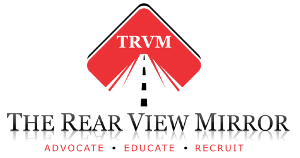TCA Profitability Program (TPP) Retention Coach Ray Haight delves into all the costs associated with bringing on a new driver and estimates the total price each and every time a carrier does this. Other areas will also see cost reductions through reduced turnover, but this is one of the most obvious.
Efficient cost management means not spending money that does not need to be spent. When hiring drivers, it is necessary to spend money to place ads, hire recruitment services, screen candidates, and then train and onboard your new drivers. If the drivers you are hiring do not stay long, this money must be spent again to find a replacement. An efficient approach would spend the recruitment, hiring, and orientation money a lot less often. Spending that money just to repeat it all over again in less than a year for each driver is not an efficient use of limited funds. An efficient approach to managing these expenditures would focus on building an effective, responsive infrastructure to ensure that drivers, once hired, chose to stay longer with the company. Efficient cost management means reducing driver turnover.
Let’s consider some of the basic dollar numbers. Depending on the marketplace, the cost of recruiting a driver and helping him or her become productive can range from $6,000 to $12,000. For some markets, it could be a lot more. For the sake of this discussion, let’s be conservative and say that it costs $9,000 to recruit and onboard a driver. If Company A has 100 drivers and an 80% driver turnover rate, we are hiring 80 new drivers each year. With this rate and these costs, every year we will be spending $720,000 to hire drivers.
If our company has an operating ratio of 95% (gross profit margin of 5%), we would need to generate $14.4 million dollars per year to service that annual expense of $720,000. A high-turnover company can never be operating efficiently; therefore, it is much harder to get and keep clients to provide that revenue. It is a vicious circle.
By reducing our turnover by half each year, we would save $360,000. In turn, this would reduce the revenue needed to support this expense to $7.2 million. Bearing in mind the company’s improved efficiency with a lower driver turnover rate, we might even be operating at better margins and need even less cost-covering revenue. It just keeps getting better.
But be sure to keep the focus on recruiting and hiring quality drivers. The objective is NOT to reduce the cost of hiring an individual driver. The aim is to minimize the OVERALL cost of hiring all your drivers. It is acceptable to spend more per hire if the selection and retention is improved.
With these kinds of numbers, it is obvious that reducing driver turnover has the potential for substantial cost savings and improved profits. In our example, going from an 80% turnover to 40% saves $360,000 per year. These cost reductions drop straight to the bottom line as increased profits or new funds for business growth investment. Improving driver turnover has a significant, positive impact on business financial health.
Earlier in this section, we suggested an average cost of $9,000 to recruit and onboard a new driver. Your cost will be different, and you need to estimate your own costs. Start by making a list of the “costs” that apply to your situation. Here are some of the typical cost elements for you to consider when estimating your own cost of hiring:
NOTE: For costs listed as “annual,” the total must be divided by the number of “new” drivers per year to obtain what the “per driver” portion is:
Advertising (traditional) Annual expense
Advertising/awareness Annual cost re tractor and trailer decals
Web site cost, online app Annual expense
Dedicated phone lines Annual cost
Automated application systems Annual depreciated costs (or fees), support, hardware, etc.
Recruiter salaries (internal) Total annual salaries
Recruiting agents Total annual expense
Recruiting fees – Driver program Bonus paid per driver referral
Sign on bonuses Cost per driver
Manager/supervisor (oversight) Annual cost – prorated if a portion of responsibilities
Interviewers (Safety) Annual cost – prorated portion dedicated to interviews
Referral/background checks Annualized portion of salaries plus any per check fees
Driver history database services Annual or per-check fees
Road tests Cost per driver (fee if external, hours paid if internal)
Drug & Alcohol tests Cost per driver
Driver training/meetings Annual cost
Training the trainers’ Annual cost
Orientation Annual hours for staff involved
Orientation Cost of any materials
Acclimation period Cost of gap to maximum efficiency / contribution
Driver file compliance Cost based on hours needed per driver
Mentors Estimated hours per driver, converted to dollars
This list is a sample to help get you started. You may have others that apply to your recruitment processes and environment. For instance, your industry or region might require some very specific skills that go well above the typical driver training and orientation sessions needed to onboard an experienced driver.
We also know that lower turnover usually means a safer carrier. Which in turn means lower insurance expense, fewer accident claims, and less wear and tear on equipment with fewer drivers rotating through which means a higher residual value of rolling assets. Lower turnover means better turnaround of receivables through a better understanding of paperwork flow with seasoned drivers. Fewer service failures with less turnover means a stronger relationship with shippers and receivers.
Companies with lower turnover are more profitable companies. For you doubters, ask the heads of safety, administration, maintenance, and operations what the cost savings might be if they were in an environment of 50% less turnover than they work with now and then add these expenses into the cost of turnover. These numbers will likely far overshadow the $360,000 saved by Company A at 40% turnover compared to 80%.
Want to learn more about retaining your skilled workforce? I’m eager to talk with you.
Safe Trucking.
Regards,
Rjh

